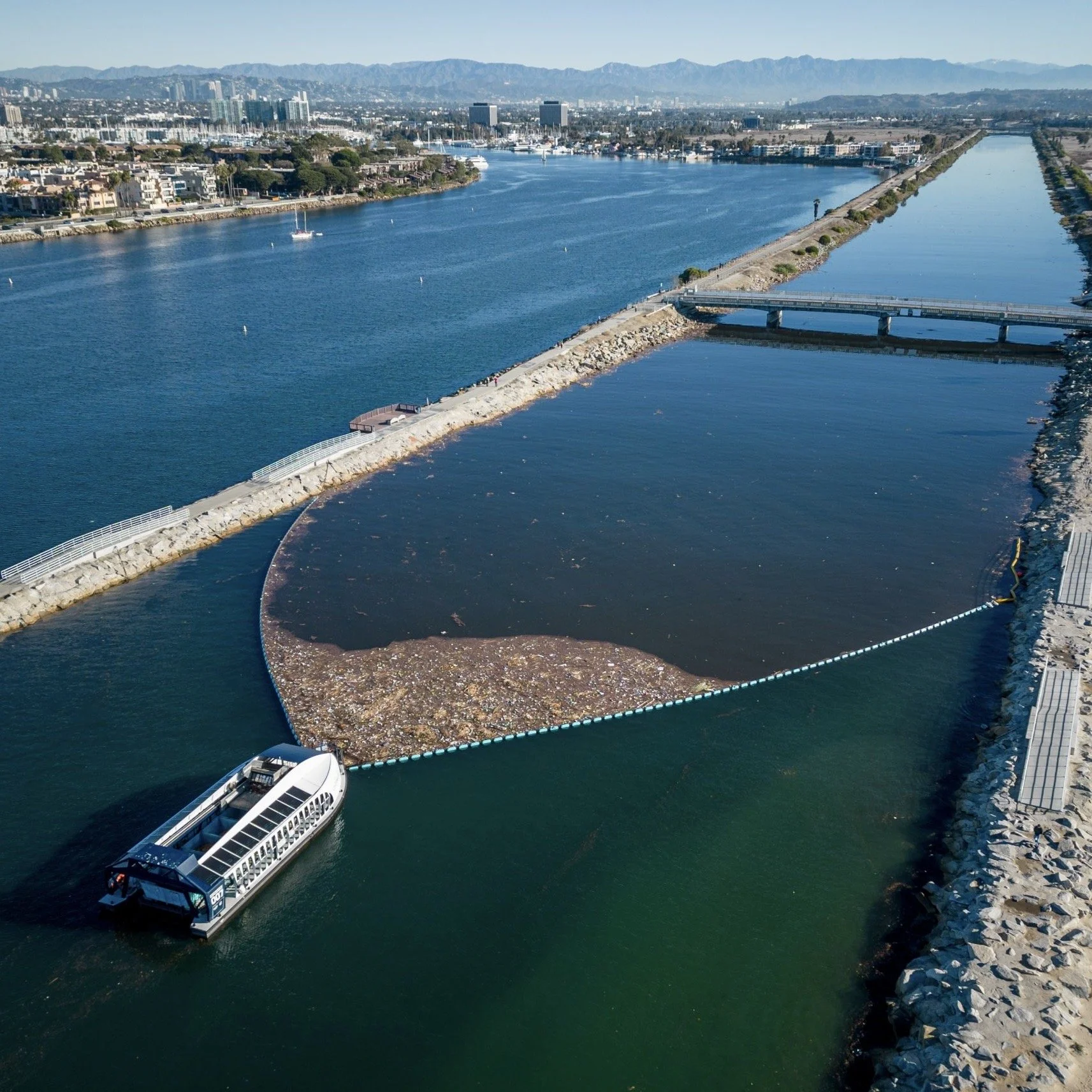The Plastic Interceptor and NEPA Rules
The problem of plastic in the ocean is huge and terribly difficult to address. When we picture the great ocean garbage patch it is tempting to picture an almost solid island of waste, but that isn’t how most of it is. Cleaning it up is a huge technical challenge. Of course, that doesn’t mean cleaning up the ocean isn’t worth pursuing. One group doing this is a Dutch nonprofit, Ocean Cleanup.
Like all problems, the closer to the source you are, the more effective you can be (as in an ounce of prevention is worth a pound of cure). Much of this waste is washed into the ocean by rivers. If you have a narrow enough river or channel, that is the place to intervene. You still have the problem of what to do with the plastic and other waste, but at least you can get it out of the water and start to deal with it. Ocean Cleanup is involved in this, and they have 10 Interceptors around the world designed to do just that, with 10 more coming out this year. You can see videos of their Interceptors in action in Los Angeles, Jamaica, Malaysia, the Dominican Republic, Vietnam, and Indonesia on their website.
One of these Interceptors, the solar-powered Ballona Creek Trash Interceptor 007, is being used in Los Angeles in the Ballona Creek channel adjacent to the Ballona Wetlands Ecological Preserve saltwater marsh.
In the picture above the Interceptor 007 is in action on Ballona Creek. Ballona Creek is a channel encased in concrete (which may change with planned restorations). On the left in the image is the channel to the Marina Del Rey marina. Not seen in the picture: the Ballona Creek saltwater marsh is to the right, Santa Monica Bay and the Pacific Ocean are only a few hundred yards just below (behind the Interceptor).
[Photographs of the Interceptor are from Ocean Cleanup.]
This pilot program is being done through a partnership formed in 2019 between the Los Angeles County Board of Supervisors and Ocean Cleanup. As reported in the Los Angeles Times this will be tested with the current rains as the Ballona Creek channel services a large watershed inhabited by 1.5 million people. During the rains in November 2022, 35,000 pounds of waste were collected despite an upstream net designed to collect solid waste.
Plastic pollution is a huge problem and these activities alone won’t solve it, but they are a valuable tool and are very promising. We need to support and encourage such efforts.
An update May 11, 2023: great news! the Interceptor was hugely successful in preventing plastic trash from entering the ocean after the rains this winter, with 77 tons collected.
Learn more on our page on plastic pollution and our news post from last year: “Can We End Global Plastic Pollution in 20 Years?”
In other good news:
The Biden administration’s White House Council on Environmental Quality (CEQ) has now told federal regulators to consider greenhouse gases and climate change when evaluating proposed infrastructure projects as part of National Environmental Policy Act (NEPA) mandated reviews. As reported in the Huffington Post: The CEQ makes it clear that it is not to be interpreted and used as a means to stall meaningful projects on sustainable, renewable energy: Absent exceptional circumstances, the relative minor and short-term GHG emissions associated with construction of certain renewable energy projects, such as utility-scale solar and offshore wind, should not warrant a detailed analysis of lifetime GHG emissions...
The NEPA was signed into law by President Nixon on January 1, 1970, almost exactly 43 years ago.
From the NEPA.gov website: NEPA was the first major environmental law in the United States and is often called the Magna Carta of Federal environmental laws… a national policy to “use all practicable means and measures…to foster and promote the general welfare, to create and maintain conditions under which man [sic] and nature can exist in productive harmony, and fulfill the social, economic and other requirements of present and future generations of Americans.”
This was not interpreted the same way in the last administration. This is potentially a critical step forward as new infrastructure plans are designed and funded. Let’s be vigilant and see how it actually plays out.
